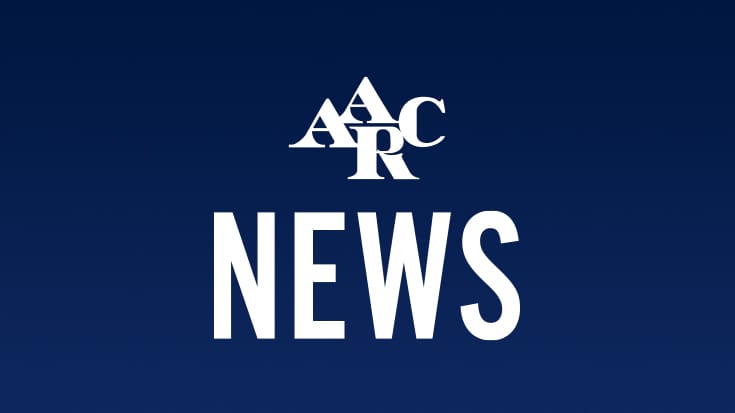
The AARC has been pushing for telehealth benefits for the past few years. With the onset of the COVID-19 pandemic the need for this benefit has skyrocketed. The ability for respiratory therapists to use telehealth services to meet their patients’ needs is imperative.
We decided to speak with AARC’s Associate Executive Director of Advocacy and Government Affairs, Anne Marie Hummel, to hear her take on the future of telehealth in respiratory therapy. The following is what she had to say.
How has telehealth changed over the past year?
Telehealth services have been gaining acceptance as a standard of care in the delivery of health care services, both at the state and federal level. However, the pandemic has brought about an explosion in telehealth due to the ability under the declaration of a Public Health Emergency (PHE) to waive various statutory and regulatory requirements, resulting in an expansion of services that many believe should be made permanent once the PHE is lifted.
Prior to the pandemic, the Federal government had limited coverage of telehealth services, while states were much more receptive to the concept. For a service to be covered under Medicare, for example, additions to the telehealth service list had to go through formal rulemaking and meet specific criteria to be considered. Approved Medicare telehealth services only then could be delivered at approved originating sites, which were generally limited to rural areas of the country. But the pandemic changed all that. Congress passed the Coronavirus Preparedness and Response Emergency Supplemental Act and the Coronavirus Aid, Relief and Economic Security (CARES) Act, coronavirus stimulus packages that enabled Medicare beneficiaries to access telehealth for the first time from their home in order to reduce exposure to COVID-19, and included telehealth coverage in Federally Qualified Health Centers and Rural Health Clinics. Geographic restrictions were also lifted, allowing services to be furnished in urban areas as well as rural locations.
The Centers for Medicare and Medicaid Services (CMS) implemented waivers that added additional practitioners, such as physician therapists, occupational therapists, and speech pathologists who were not previously designated to provide telehealth, to do so since they have direct billing authority. Over eighty new services have been added to Medicare’s list of covered telehealth services during the PHE that are applicable regardless of the patient’s location.
Prior to the pandemic, telehealth was only covered via a combination of real-time audio/visual telecommunications. CMS waived that requirement to allow certain services to be provided by audio-use only. The Office of Civil Rights waived its enforcement discretion to not impose penalties for noncompliance with the Health Insurance Portability and Accountability Act of 1996 (HIPAA) rules in connection with the provision of telehealth using non-public communication platforms such as Skype, Zoom, Apple Face Time, Facebook Messenger, etc., while at the same time encouraging providers to notify patients that these types of applications potentially introduce privacy risks and ensuring that all available encryption and privacy modes were enabled using such applications.
States have taken similar actions by implementing waivers to remove barriers for telehealth utilization on a temporary basis through Executive Orders, legislation, and rulemaking, including policies impacting Medicaid telehealth.
Many states have lifted licensing requirements, making it easier for health care professionals to move among states, especially to help in surge areas, without having to gain a new license. Some states have specifically included respiratory therapists as telehealth practitioners by name while other states defer to health care professionals licensed, certified, or registered to provide services within their scope of practice. The Center for Connected Health Policy is a national resource on telehealth policy and provides telehealth actions taken by each state. It is an excellent resource if you want to know what is happening where you live.
How does this impact respiratory therapists?
During the pandemic, CMS has acknowledged that respiratory therapists can furnish telehealth services under Medicare’s “incident to” benefit. However, this benefit is limited to services that are an integral although incidental part of a physician’s or nonphysician practitioner’s (NPP) services commonly furnished in the physician/NPP office/clinic setting. The incident to provision also applies to therapeutic outpatient hospital or critical access hospital services. The benefit requires direct supervision, which is defined as requiring the physician/NPP to be immediately available to furnish assistance and direction throughout the performance of the service but not necessarily present in the room where it is being furnished. Under its waiver authority, CMS is allowing physicians and NPPs to provide direct supervision using interactive audio/video real-time communications technology to limit risks of exposure to COVID-19. In its recent proposed rule to update payment under the physician fee schedule, CMS is proposing to extend this policy until the later of the end of the calendar in which the PHE ends or December 31, 2020.
Services included on CMS’ covered telehealth that can be furnished by respiratory therapists include several ventilator management codes, including home ventilator management supervision, evaluation/demonstration of inhaler techniques, and smoking cessation counseling. It is important to note that respiratory therapists are not authorized to provide virtual check-ins or e-visits or other types of telehealth evaluation and management services under the incident to benefit.
What can respiratory therapists do to lobby?
As a result of the pandemic, there are numerous bills in Congress that would expand telehealth benefits or make permanent some of the provisions that have been implemented on a temporary basis during the pandemic. Although these bills are not expected to be enacted before the end of the year, we expect several to be reintroduced in the new Congress in 2021.
Of these bills, the CONNECT Act (Creating Opportunities Now for Necessary and Effective Care Technologies – HR 4932 and S 2741) is the only bill that directly includes respiratory therapists to furnish telehealth services moving forward. It includes a provision that allows CMS to utilize the services of those practitioners who are not currently listed as qualified to furnish telehealth, to furnish such services as part of the alternative payment models CMS is testing through its Innovation Center. As part of our AARC TAKE ACTION Advocacy campaign in February this year and prior to mitigation policies related to CVID-19 being put in place, over 33,000 messages were sent to members of Congress encouraging co-sponsorship of this important legislation. As of August 28, there are 62 cosponsors of the House CONNECT Act and 39 cosponsors of the Senate companion bill. We expect it to be reintroduced in the new Congress with possible revisions that give waiver authority to the Secretary to lift restrictions during any type of emergency or natural disaster and will continue to advocate for cosponsors and enactment.
The Protecting Access to Post-COVID-19 Telehealth Act of 2020 (HR 7663) is a bipartisan bill introduced in July this year by members of the Congressional Telehealth Caucus and is supported by the AARC and over 200 other organizations. Although it does not include any provision directly relating to respiratory therapists or respiratory care services, it does contain provisions that indirectly apply to the ability of RTs to continue to furnish telehealth under the incident to benefit. These include removing arbitrary geographic restrictions on where a patient must be located in order to utilize telehealth services enabling patients to continue to receive telehealth services in their homes; allowing rural health clinics and federally qualified health centers to be reimbursed for providing telehealth services; and, establishing permanent waiver authority for the Secretary of Health & Human Services during future emergency periods and for 90 days after the expiration of a PHE period.
Because of the importance of respiratory therapists being on the front line during these challenging times to use their expertise to combat COVID-19 and to save lives, the AARC has stepped back from any major advocacy campaigns during the pandemic to allow our members to focus their time, energy and expertise on patient care. However, we will be closely monitoring telehealth legislation to establish a new campaign for 2021.
How would telehealth services help the profession grow? Or help the profession in general?
Expanding the ability of RTs to furnish telehealth services allows the profession to provide a new health care delivery model that highlights their expertise and skills in delivering patient care. This is particularly important from the state perspective, where it offers the ability of RTs to increase their visibility among the Medicaid community where the profession is often overlooked. By having clinical staff furnish telehealth services incident to the physician’s or nonphysician practitioner’s professional service, it offers opportunities for RTs to work either part-time or under contract in physician’s offices and clinics. If an individual’s home is permanently included as a telehealth site and geographic restrictions are eliminated, RTs will increase their ability to keep patients out of the hospital and expand their expertise to reach those in rural areas who often cannot get to their physician’s office.
Email newsroom@aarc.org with questions or comments, we’d love to hear from you.














